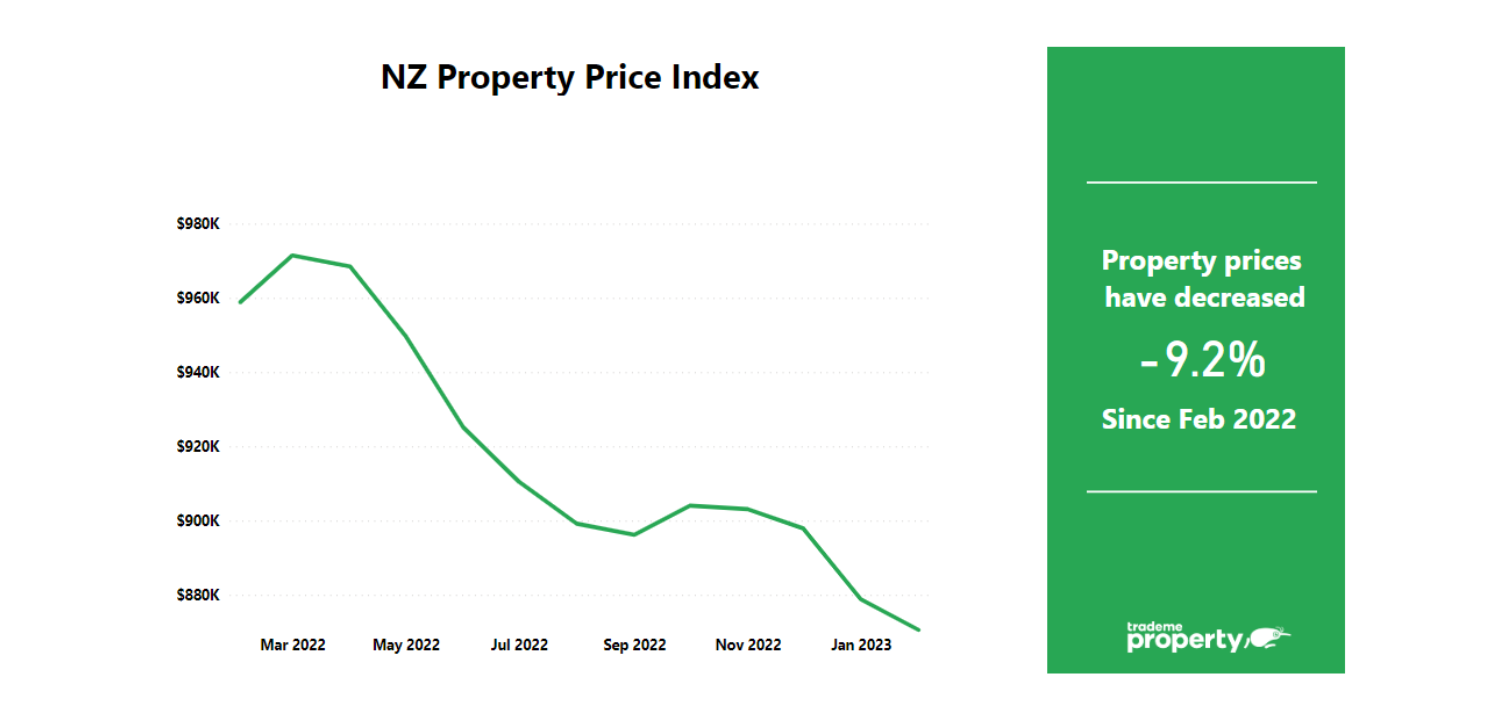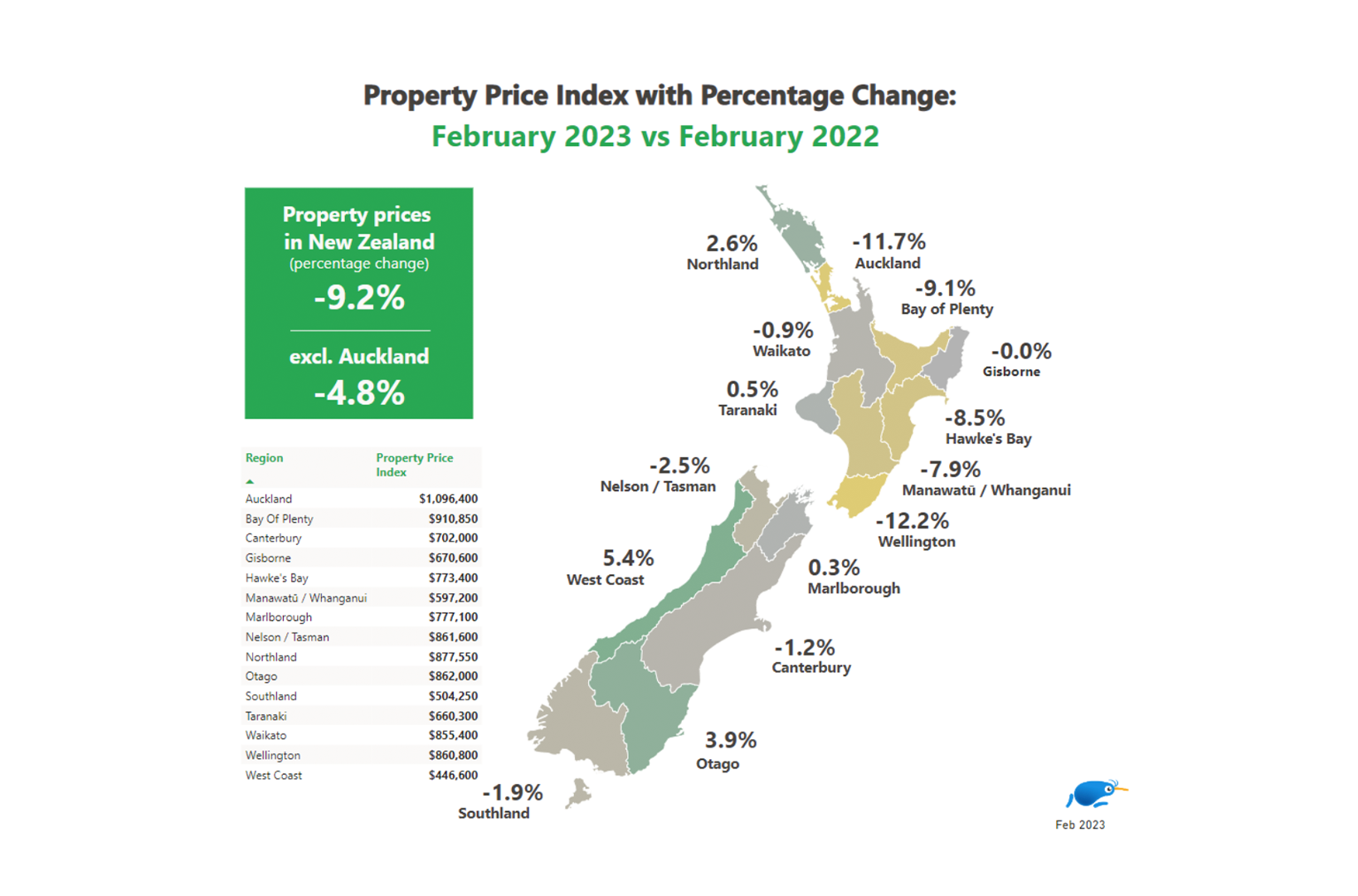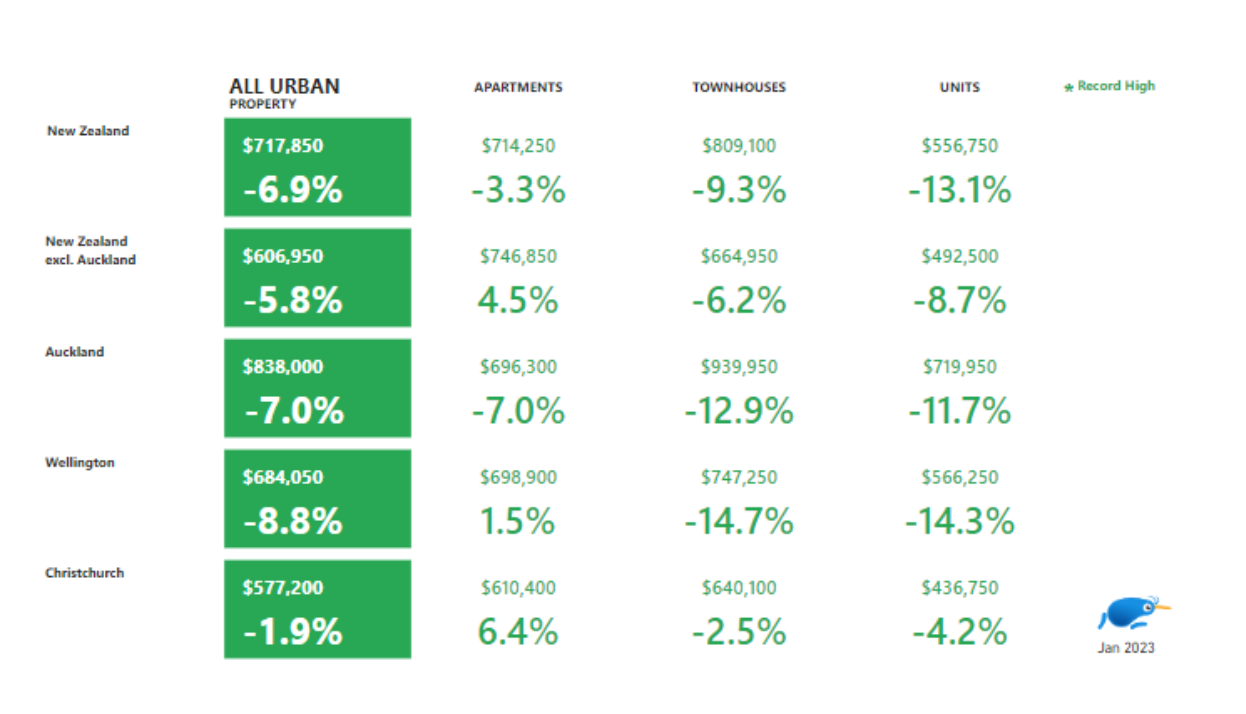News Next article
February Property Price Index 2023
Property prices plummet by $88,400 in 12 months
21 March 2023Property price drops continued in February with the national average asking price plunging to $870,550, according to the latest Trade Me Property Price Index.
Trade Me Property Sales Director Gavin Lloyd said the national average asking price fell by 9 per cent, or $88,400, year-on-year in February, marking the largest drop on record. “The downward trend we have seen since November 2022 continued last month, with the national average price now seeing a year-on-year drop for four months in a row.”
Looking around the regions, Mr Lloyd said the steepest drops were seen in the main centres, with asking prices falling by 12 per cent year-on-year in both the Wellington ($860,800) and Auckland ($1,096,400) regions. “We have not seen average asking prices this low in the main centres since mid 2021.
“The Bay of Plenty ($910,850) and Hawke’s Bay ($773,400) regions saw their average asking prices fall 9 per cent year-on-year, while Manawatū/Whanganui ($597,200) was not far behind with an 8 per cent drop.”
Mr Lloyd said other regions that saw average asking prices tumble last month when compared with February 2021 were Nelson/Tasman (-3%), Southland (-2%), Canterbury (-1%), and Waikato (-1%).
Looking back to this time last year, Mr Lloyd said it’s clear the market is now in a completely different place. "March marks 12 months since we saw the national average asking price reach its all-time high of $971,450. Prior to that, the average asking price reached a new record for 18 months in a row, which is almost unthinkable given where the market is now.”
Prices fall in the main centres for six months
Mr Lloyd said the average asking prices in Auckland and Wellington had now seen a year-on-year downturn for six consecutive months. “These two regions really led the pack but what we’re now seeing is price drops spreading around the country.
“The Hawke’s Bay and Manawatū/Whanganui regions have now seen five months of prices declining, while the Bay of Plenty region is at three months.”
Mr Lloyd said February marked the first time on record average asking prices had seen a dip in the Canterbury, Nelson/Tasman, and Waikato regions.
On the other hand, Northland, Otago, and Gisborne were the only regions that escaped price drops last month. “Time will tell whether these regions can continue to buck the trend or they’ll see prices start to fall, too.”
Supply increases while demand slows down
Nationwide supply increased by 13 per cent in February when compared with the same month in 2022. “Wellington (-7%) and Gisborne (-4%) saw supply drop last month when compared with the year prior, while every other region saw a jump.
“Nelson/Tasman was the standout, with supply in the region spiking 61 per cent year-on-year.”
Mr Lloyd said flooding and Cyclone Gabrielle didn’t appear to impact market supply in February, but this may change in the months ahead. “Despite the devastating natural disaster in Hawke’s Bay last month, supply in the region jumped by 8 per cent year-on-year. Over the next wee while we expect to see the regional market change as the full extent of the damage and its wider implications become clearer.”
While supply increased, nationwide demand fell 13 per cent year-on-year in February. “ It seems that uncertainty about what’s in store for the rest of the year has buyers holding back. This was reflected in every region, with demand down across the board.”
Mr Lloyd said the largest drops were seen in the flood and cyclone impacted regions of Gisborne (-36%), Northland (-33%), Hawke’s Bay (-28%), and Waikato (-19%).
“With supply still sky-high and demand tailing off, it’s not surprising that prices are on the decline as the market remains cool.”
Apartments prices go against the grain
Apartment prices continued to be the strongest of any urban property types in February. “Nationwide the average asking price for an apartment fell by 5 per cent year-on-year last month. While this is a notable change, prices for townhouses (-10%) and units (-13%) dropped considerably further.
“If we remove the Auckland region from the equation, apartment prices actually jumped 8 per cent year-on-year last month, while prices for all other urban properties dropped.”
Other news you might like






